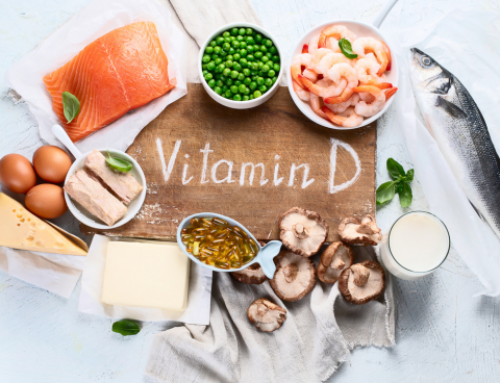Dietary Displacement: The Real Reason Trendy Diets Can Produce Great Results
Keto. Gluten-free. Raw vegan.
Many of today’s trendiest diets are quite restrictive. And when you think about it, some are in direct conflict with one another—raw vegan diets forbid all animal products, for example, while many ketogenic diets revolve around them. Yet proponents of both report extraordinary results. How?
Champions of trendy diets often point to the most pseudoscience-y components of their devotion as being the reason for their nutritional superiority. Many raw vegans believe that cooking foods unquestionably corrupts and degrades them for the worse, for example, though the research clearly says otherwise. Paleo enthusiasts often argue the positive effects of their diet can be attributed to “eating like our Paleolithic ancestors,” but people of the Paleolithic era, which came to an end roughly 11,000 years ago, actually had quite varied diets by region and climate. Many ate cereal grains, and some subsisted almost entirely on melons.
The reality of why many find success with these types of diets is a lot more simple—they help people stop eating crap.
When begin a new diet like the paleo diet, you start eating new foods and/or drastically changing the amount you eat of certain foods. So for a keto or paleo diet, it might mean more beef, bacon, salmon, almond butter, eggs, walnuts, broccoli and beets, for example. But these changes don’t just happen in a vacuum. You’re not simply eating more of these foods without changing your already existing diet. You’re displacing others foods with them. This is what’s known as dietary displacement.
Dietary displacement is why many people will feel better on a gluten-free diet even if they don’t have celiac disease or an actual gluten sensitivity (which only about 7% of Americans do). It’s also a huge reason why many people feel better on diets like raw vegan and paleo, even if the science behind those diets is far from concrete. It’s not so much about what you’re eating now—it’s more about what you’re eating no longer.
Let’s look at the standard American diet (SAD) a bit closer. Perhaps the single biggest issue with the SAD is the staggering amount of added sugar it contains. Added sugars are defined as “any sugars or caloric sweeteners that are added to foods or beverages during processing or preparation.” Unlike naturally occurring sugars, which are a product of mother nature, added sugars are added to foods by humans.
“Over the past 30 years, Americans have steadily consumed more and more added sugars in their diets, which has contributed to the obesity epidemic,” the American Heart Association states.
Diets high in added sugar have been linked to obesity, Type 2 diabetes, heart disease, tooth decay, joint pain, depression, anxiety, acne and even cancer. Foods high in added sugar are typically low in overall nutrients, making them little more than empty calories. The FDA states that “scientific data shows that it is difficult to meet nutrient needs while staying within calorie limits if you consume more than 10 percent of your total daily calories from added sugar.” 10 percent of your daily calories from added sugar sounds like a lot, but it’s frighteningly easy to surpass that total. One gram of sugar contains 4 calories. A 12-ounce can of Coca-Cola contains 39 grams of sugar (virtually all of which are added sugar). That’s 156 calories of added sugar—nearly 8 percent of your total daily calories if you’re on a 2,000 calorie a day diet.
In a day and age when the average American consumes a staggering 88 grams of added sugar per day (the AHA recommends a limit of 24 grams per day for women and 36 grams per day for men), food producers are using lots of it to ensure they’re appealing to consumers’ tastes. “Sweetness has an almost universal appeal. So adding sugar to processed foods makes them more appetizing,” the Mayo Clinic states.
When you switch to one of the aforementioned diets, odds are you’re going to cut a whole lot of added sugar out of your life. The same rings true for refined carbohydrates and ultra-processed foods. Obviously replacing these with produce or high-quality proteins is fantastic and offers additional benefit, but the simple act of cutting out the junk is enough to make a major difference. It’s also why one person can swear by the benefits of a paleo diet while another swears by those of raw veganism—what they eat might be quite different, but what they’ve cut out is likely very similar.
Dietary displacement can be negative, too—if you start eating a bunch of brownies and cookies and cut down on carrots and cashews, that’s negative dietary displacement. While there’s no one perfect diet, a hallmark of any successful diet is positive dietary displacement.
We get so caught up with focusing on the minutiae of nutrition that we often miss the forest for the trees. Carbs aren’t the devil. Neither is fat. Cooking vegetables doesn’t make them worthless. Gluten doesn’t make everyone sick. Black beans and quinoa aren’t unhealthy just because some fictionalized version of our “caveman” ancestor didn’t eat them. We’re often too quick to demonize healthy foods while we ignore the real factors dragging down our diets.
A massive study from the Stanford University School of Medicine underscored this. Researchers found that a simple shift in eating philosophy resulted in similar weight loss among participants despite significant differences in age, genetics, carb intake, dietary fat intake and insulin levels.
The study entailed half of the 609 participants being placed on a low-carb, high-fat diet and the other half being placed on a high-carb, low-fat diet. The participants were told to eat as much as they want and not to worry about counting calories or controlling portion sizes. But most importantly, both groups were instructed to eat “as little or no added sugar, if possible, as little or no refined grain, if possible, and as many vegetables as you can.”
Despite eating markedly different foods, both groups experienced similar weight loss over the year, and differences in genetics and insulin levels didn’t seem to impact the amount of weight lost. Christopher Garner, Phd, professor of medicine and lead author of the study discusses the study and the results:
“We’re battling about points on the fringe of this whole debate without getting to the core. I think if we really focused on added sugar and refined grain (and their) decrease or elimination, and we worked with some of our favorite chefs to make vegetables even more unapologetically delicious, a lot of the debates would go away,” Garner says.
Yes, trendy diets can work. But the fanatics of these diets often evangelize them for all the wrong reasons. The vast majority of humans can enjoy a healthy diet that allows them to cook their food, eat carbs, consume dairy, eat gluten, etc. The strict rules of many trendy diets can make eating more of a burden, but the discipline they provide has helped many people achieve their eating goals. The takeaway is that eating less junk is the true secret of a healthy diet, and there isn’t just one right way to go about that.
Photo Credit: Ivo Gretener/iStock
READ MORE:
RECOMMENDED FOR YOU
MOST POPULAR
Dietary Displacement: The Real Reason Trendy Diets Can Produce Great Results
Keto. Gluten-free. Raw vegan.
Many of today’s trendiest diets are quite restrictive. And when you think about it, some are in direct conflict with one another—raw vegan diets forbid all animal products, for example, while many ketogenic diets revolve around them. Yet proponents of both report extraordinary results. How?
Champions of trendy diets often point to the most pseudoscience-y components of their devotion as being the reason for their nutritional superiority. Many raw vegans believe that cooking foods unquestionably corrupts and degrades them for the worse, for example, though the research clearly says otherwise. Paleo enthusiasts often argue the positive effects of their diet can be attributed to “eating like our Paleolithic ancestors,” but people of the Paleolithic era, which came to an end roughly 11,000 years ago, actually had quite varied diets by region and climate. Many ate cereal grains, and some subsisted almost entirely on melons.
The reality of why many find success with these types of diets is a lot more simple—they help people stop eating crap.
When begin a new diet like the paleo diet, you start eating new foods and/or drastically changing the amount you eat of certain foods. So for a keto or paleo diet, it might mean more beef, bacon, salmon, almond butter, eggs, walnuts, broccoli and beets, for example. But these changes don’t just happen in a vacuum. You’re not simply eating more of these foods without changing your already existing diet. You’re displacing others foods with them. This is what’s known as dietary displacement.
Dietary displacement is why many people will feel better on a gluten-free diet even if they don’t have celiac disease or an actual gluten sensitivity (which only about 7% of Americans do). It’s also a huge reason why many people feel better on diets like raw vegan and paleo, even if the science behind those diets is far from concrete. It’s not so much about what you’re eating now—it’s more about what you’re eating no longer.
Let’s look at the standard American diet (SAD) a bit closer. Perhaps the single biggest issue with the SAD is the staggering amount of added sugar it contains. Added sugars are defined as “any sugars or caloric sweeteners that are added to foods or beverages during processing or preparation.” Unlike naturally occurring sugars, which are a product of mother nature, added sugars are added to foods by humans.
“Over the past 30 years, Americans have steadily consumed more and more added sugars in their diets, which has contributed to the obesity epidemic,” the American Heart Association states.
Diets high in added sugar have been linked to obesity, Type 2 diabetes, heart disease, tooth decay, joint pain, depression, anxiety, acne and even cancer. Foods high in added sugar are typically low in overall nutrients, making them little more than empty calories. The FDA states that “scientific data shows that it is difficult to meet nutrient needs while staying within calorie limits if you consume more than 10 percent of your total daily calories from added sugar.” 10 percent of your daily calories from added sugar sounds like a lot, but it’s frighteningly easy to surpass that total. One gram of sugar contains 4 calories. A 12-ounce can of Coca-Cola contains 39 grams of sugar (virtually all of which are added sugar). That’s 156 calories of added sugar—nearly 8 percent of your total daily calories if you’re on a 2,000 calorie a day diet.
In a day and age when the average American consumes a staggering 88 grams of added sugar per day (the AHA recommends a limit of 24 grams per day for women and 36 grams per day for men), food producers are using lots of it to ensure they’re appealing to consumers’ tastes. “Sweetness has an almost universal appeal. So adding sugar to processed foods makes them more appetizing,” the Mayo Clinic states.
When you switch to one of the aforementioned diets, odds are you’re going to cut a whole lot of added sugar out of your life. The same rings true for refined carbohydrates and ultra-processed foods. Obviously replacing these with produce or high-quality proteins is fantastic and offers additional benefit, but the simple act of cutting out the junk is enough to make a major difference. It’s also why one person can swear by the benefits of a paleo diet while another swears by those of raw veganism—what they eat might be quite different, but what they’ve cut out is likely very similar.
Dietary displacement can be negative, too—if you start eating a bunch of brownies and cookies and cut down on carrots and cashews, that’s negative dietary displacement. While there’s no one perfect diet, a hallmark of any successful diet is positive dietary displacement.
We get so caught up with focusing on the minutiae of nutrition that we often miss the forest for the trees. Carbs aren’t the devil. Neither is fat. Cooking vegetables doesn’t make them worthless. Gluten doesn’t make everyone sick. Black beans and quinoa aren’t unhealthy just because some fictionalized version of our “caveman” ancestor didn’t eat them. We’re often too quick to demonize healthy foods while we ignore the real factors dragging down our diets.
A massive study from the Stanford University School of Medicine underscored this. Researchers found that a simple shift in eating philosophy resulted in similar weight loss among participants despite significant differences in age, genetics, carb intake, dietary fat intake and insulin levels.
The study entailed half of the 609 participants being placed on a low-carb, high-fat diet and the other half being placed on a high-carb, low-fat diet. The participants were told to eat as much as they want and not to worry about counting calories or controlling portion sizes. But most importantly, both groups were instructed to eat “as little or no added sugar, if possible, as little or no refined grain, if possible, and as many vegetables as you can.”
Despite eating markedly different foods, both groups experienced similar weight loss over the year, and differences in genetics and insulin levels didn’t seem to impact the amount of weight lost. Christopher Garner, Phd, professor of medicine and lead author of the study discusses the study and the results:
“We’re battling about points on the fringe of this whole debate without getting to the core. I think if we really focused on added sugar and refined grain (and their) decrease or elimination, and we worked with some of our favorite chefs to make vegetables even more unapologetically delicious, a lot of the debates would go away,” Garner says.
Yes, trendy diets can work. But the fanatics of these diets often evangelize them for all the wrong reasons. The vast majority of humans can enjoy a healthy diet that allows them to cook their food, eat carbs, consume dairy, eat gluten, etc. The strict rules of many trendy diets can make eating more of a burden, but the discipline they provide has helped many people achieve their eating goals. The takeaway is that eating less junk is the true secret of a healthy diet, and there isn’t just one right way to go about that.
Photo Credit: Ivo Gretener/iStock
READ MORE:










